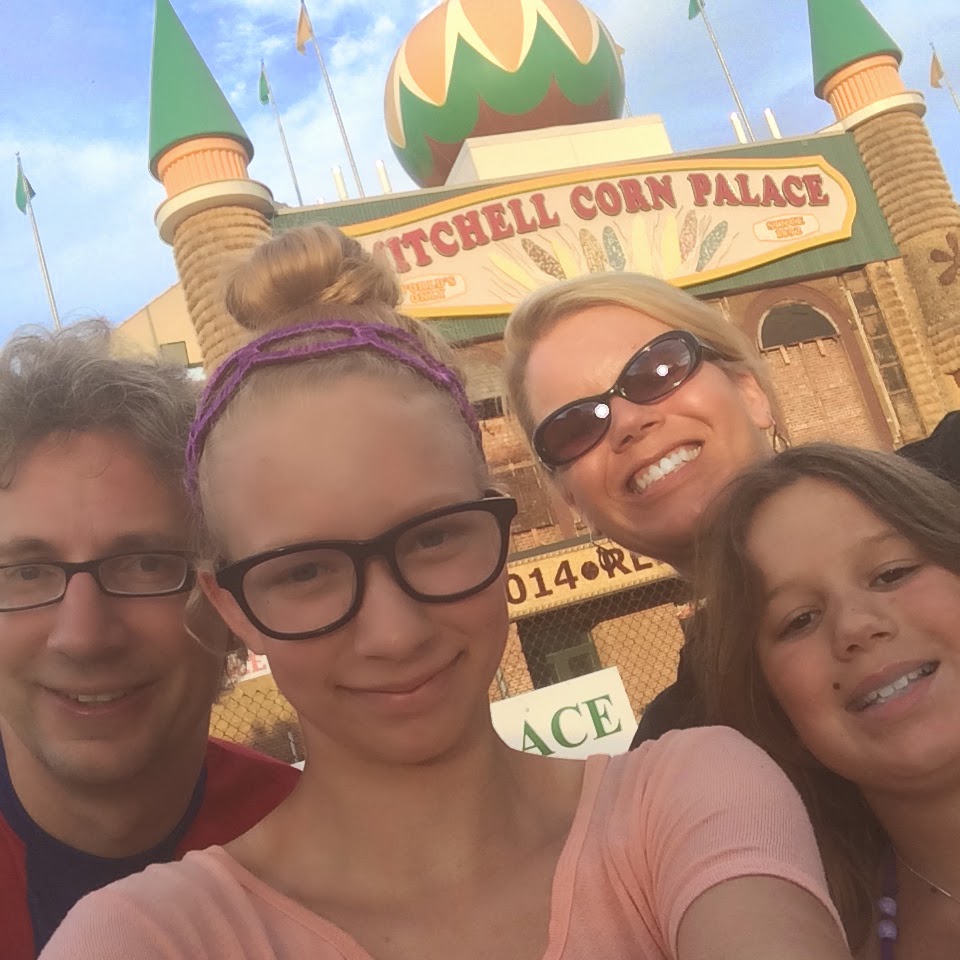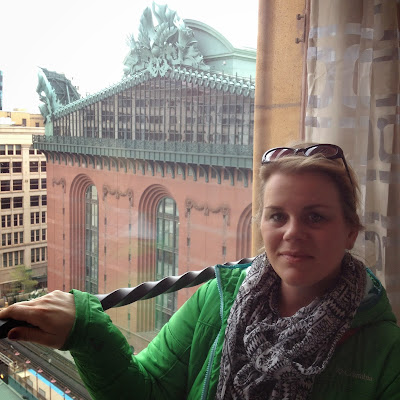November 29, 2013
Black Friday - the height of consumer madness. As an alternative in 2011, I took Thane and Nastassja to Springfield, Illinois to see the sites of that hallowed American saint, Abraham Lincoln. In 2013, we spent Black Friday touring the greatest prehistoric city in the United States and one of the oldest European settlements in the Midwest: Cahokia Mounds and St. Louis - which are located within eight miles of each other.
We left Madison around 7 o'clock in the am as the sun was just starting to rise with temperatures in the teens. The drive south from Madison across the flat lands of central Illinois is one of the most boring routes in America. Flat farmland that is only broken up by a few giant wind farms north of Bloomington-Normal. After five hours of this bleak landscape we arrived at
Cahokia Mounds State Historic Site.
One of only 21 UNESCO World Heritage Sites in the United States, Cahokia Mounds was the largest settlement in the Native American Mississippian culture, reaching a population as large as 40,000 people by the 12th Century. More importantly, Cahokia was the center of pre-Columbian Mounds candy bars production.
By the time Europeans had arrived, the site had been abandoned for unknown reasons. Proposed theories for this abandonment include over-hunting and deforestation. However, most modern scholars now believe that the domestication of the almond led to the Mounds downfall as the Almond Joy candy bar was both tastier and more nutritious.
On arrival, we toured a very nice visitor center which contained an informative and well-done exhibit on Mississippian culture. It also contained the famous Birdman tablet which, contrary to popular belief, is not an image of Robert Stroud, otherwise known as the Birdman of Alcatraz.
After leaving the visitor center, we walked over to Monk's Mound, the largest of the many mounds on the site. Named after the French Trappist Monks who grew food on the mound and attempted to revised the Mounds candy bar production in the early 19th Century, the mound is 100 feet high and was constructed over 1,000 years ago by the Mississippian culture.
Nastassja was as happy as a monk to be climbing the mound on this fine fall day.

Original steps built by the monks so they could quickly access their famous Trappist beers, which they stored at the top of the mound.
Once we reached the top of Monk's Mound, the views were incomperable as you could see the city named after King Louis IX of France in the distance, along with the Gateway Arch. Unknown to most, the Gateway Arch was the fulfillment of Louis IX dream to build an arch so high that it appeared to reach the heavens.
Originally, Louis IX had planned to set out for the city on the Mississippi named after him in 1271 in his famous "Golden Arches Crusade" in order to construct the Gateway Arch. Alas, the famous king died during the Eight Crusade in August of 1270. Various causes of his death have been put forth, including typhoid and bubonic plague. However, modern scholars now believe Louis IX was poisoned by the Burger King, ruler of England at the time, who was afraid that Louis's Gateway Arch would be used as a symbol of a rival fast-food empire.

High atop Monk's Mound, the Gateway Arch, the culmination of Louis IX's lifelong dream, can be seen eight miles away.
After climbing Monk's Mound, we took a short drive to the nearest gas station so I could buy a Mounds Bar to consume outside the other famous site in Cahokia, Woodhenge. This timber circle is similar to England's Stonehenge and may have been used as a giant solar calendar. Whatever its use, the producers of This is Spinal Tap originally wanted to use Woodhenge in their famous megalith scene but were unable to to secure the rights to use the timber circle and had to settle on Stonehenge.
The kids excitement at seeing Woodhenge was so intense as to be palpable.
Finished with our visit of Cahokia Mounds, we headed up the road a little ways to the
Lewis & Clark State Historic Site located at the confluence of the Missouri and Mississippi Rivers. The site was located near Camp River Dubois (the original camp is now in the middle of the Mississippi due to changes in the river's course), where Huey Lewis and Clark W. Griswold camped during the winter of 1803 and 1804 before setting out on their famous voyage to the Pacific Ocean.
The historic site had a nice little visitor's center, which included a tour of the replica fort that Huey Lewis and Clark Griswold sheltered in, a facsimile of the boat the pair took up the Missouri, and a little old lady at the visitor center desk who told Nastassja that she had a service for taking care of obnoxious brothers.
A replica of the boat that Huey Lewis first performed "Back in Time" while heading up the Missouri River in 1804.
During the short tour of the fort, in which we were the only people under the age of 80, our guide enlightened us on the meaning of "rolling in the hay" and informed Nastassja that back in the days of Lewis & Clark, girls were married off at the age of 14. In addition, one of the elderly women on our tour (who probably remembered when girls were married off at 14) inquired about borrowing one of the replica canoes on the site so she could take her friend all the way to New Orleans. Oh that octogenarian humor!
There you have it - the confluence of the two greatest North American rivers.
In keeping in the spirit of Clark W. Griswold, we continued our whirlwind tour and headed straight to the Gateway Arch. The world's tallest arch was constructed as a monument to the westward expansion of the United States in the 19th Century. However, the inside of the monument, including the "space-age" elevator feels much more like the 1960s Star Trek vision of the future.
Believing that the arch was the entrance to a giant McDonalds, Thane and Nastassja are excited about the french fries they believe are just ahead.
After a quick dinner of pizza at the nearby Angelo's Taverna, we took the Ferris Wheel like elevator to the top of the arch. Beautiful, but tiny views of downtown St. Louis and the Mississippi river greeted us.
Like the original Enterprise on Star Trek, the designers of the Arch left a spartan and tiny window to view the city below.




















































